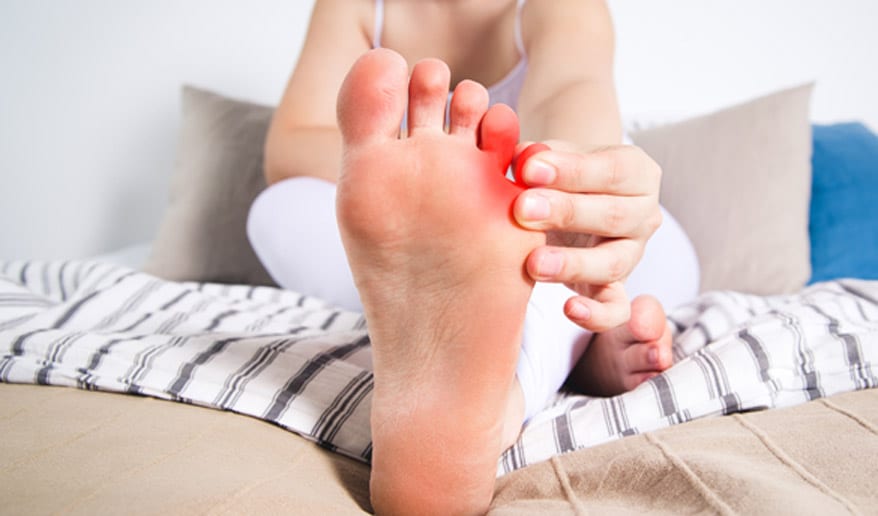
A bunionette is a protrusion on the inside of the foot below the little toe. A bunionette, also called a tailor’s bunion, is often associated with the little toe turning inward. Narrow or tight-fitting footwear may exacerbate the condition.
Symptoms of a Bunionette
Signs of a bunionette include:
- Abnormal bump below the little toe
- Corns or calluses growing over the bump
- Swelling, redness and pain when wearing shoes that press against the bump
- Infection caused by a break in the skin
Causes of a Bunionette
Bunionettes may be caused by the following:
- Poorly-fitting or tight footwear, such as high-heeled shoes or shoes with narrow, pointed toe boxes
- Congenital condition that leads to a bowing of the long bones of the forefoot
How Bunionettes Are Diagnosed
Individuals who suspect they have a bunionette should schedule a visit with a podiatrist or orthopedic specialist. During the visit, the healthcare practitioner will perform a physical examination, review the patient’s history and order an x-ray to determine the extent of the damage.


Treatment Options
Patients should always consider non-surgical options before turning to surgery. Conservative treatment options for bunionettes include:
- Wearing spacious and comfortable footwear in which the ball of the foot fits well in the widest part of the shoe
- Padding the bunionette with over-the-counter bunion cushions
- Applying a cold pack to treat an inflamed bunionette
- Taking ibuprofen, aspirin or naproxen to alleviate swelling and pain
- Using a shoe stretcher, which is a plastic plug, to stretch the bunionette area and relieve pressure on the foot at that point
- Using a shoe insert to redistribute weight so that the bunion doesn’t constantly rub against the shoe
Surgery Options
If non-invasive treatments fail to provide relief, patients should consider surgery to realign the bone. Depending on the severity of the condition, the recovery period may be lengthy.
Patients who don’t have a bony growth may need to have the painful soft tissue of the fifth toe removed. Patients with a Type 1 bunionette, characterized by a bony prominence at the fifth metatarsal head, will need to have this bony growth removed.
If the bony protuberance is especially big, the bone of the fifth metatarsal will need an osteotomy, which is a procedure that involves breaking the bone to correct alignment.
Patients who have a Type 2 bunionette (a curved fifth toe) or a Type 3 bunionette (an angled toe) will need an osteotomy. The bone will be held straight with a steel screw, plate or wire.
After surgery, patients will be advised from putting any weight or pressure onto their foot and will need to wear a post-surgical shoe or a short CAM boot on their foot. Patients should avoid getting the foot wet until the stitches have been removed and will likely need to use crutches or a walker, depending on the level of their pain and activity. To help decrease swelling, the operated foot should be elevated above the heart level as much as possible for the first few days after surgery.
Stitches will be removed two to three weeks after surgery. During the recovery period, patients should do knee and ankle exercises to help maintain joint motion and flexibility. Patients should expect to experience swelling for six to 12 months after surgery.


